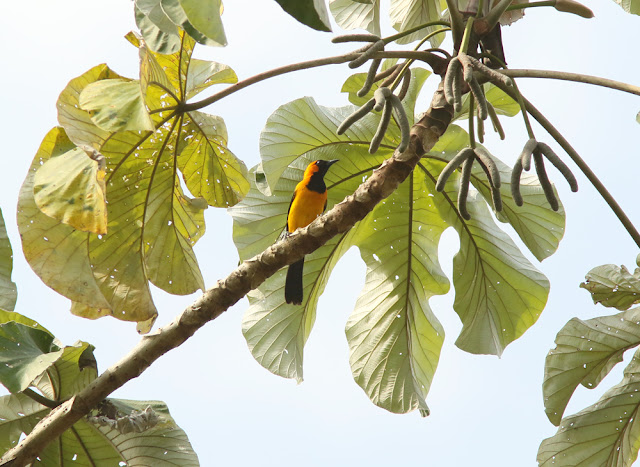So you want to see a Harpy Eagle do you? Well, it's not so hard. Get on any highway, take it south. All the way south. When you can't go any farther south, get on a different highway, keep going south. Eventually you'll be on the Pan-American highway; take it until it ends and you can drive no farther south in "North" America. Then get in a motorized dugout canoe, take it up the river until it's basically too shallow to go much farther and get in a truck that was ferried in to the village at some point in the past. Take it down the two track leading to Darien National Park and go until it ends. Then start walking. Two miles through the hot humid jungle to reach the Rancho Frio camp. Did I mention that the adult will likely be gone from the nest by 930 and only 4 people at a time can visit the nest site? No pressure. The group the day before us had gotten there too late and only saw some tufts of the scruffy chick.
We got up at 4am, and were on the road by 5am. We were at the end of the road by 6am and dawn came as we motored down the river. Cocoi Herons were pretty common along the river.
The boatman mentioned he'd seen a big raptor the day before and Domi had him slow down and then stop when this appeared 600 yards away atop a massive Ceiba tree.
It's a huge gray and black eagle with a single crown feather, a Crested Eagle, even rarer than our target Harpy.
Since only 4 people at a time would fit into the blind Domi suggested that half walk ahead and so 4 of us double-timed it an hour down the trail. Did I mention that the rangers only speak Spanish? It took a few minutes to explain when we reached the Rancho Frio camp that we didn't want to wait for the rest of the group, but eventually we figured it out and were escorted the last quarter mile to the blind.
The female was waiting.
The nest was probably about 125 yards distant, above is one of Rhoda's digi-scoped images, the following are mine.
It was very humid and overcast and photography (or even looking through the scope without fogging it) wasn't easy. Our 20 minutes with the intensely-anticipated bird passed in what felt like one. Maybe less. It was a hard bird to walk away from. We timed it about perfectly though, we arrived back at the camp just as the other half was ready to take the final spur. The bird remained a similar amount of time for them and then flew off into the forest.




















































